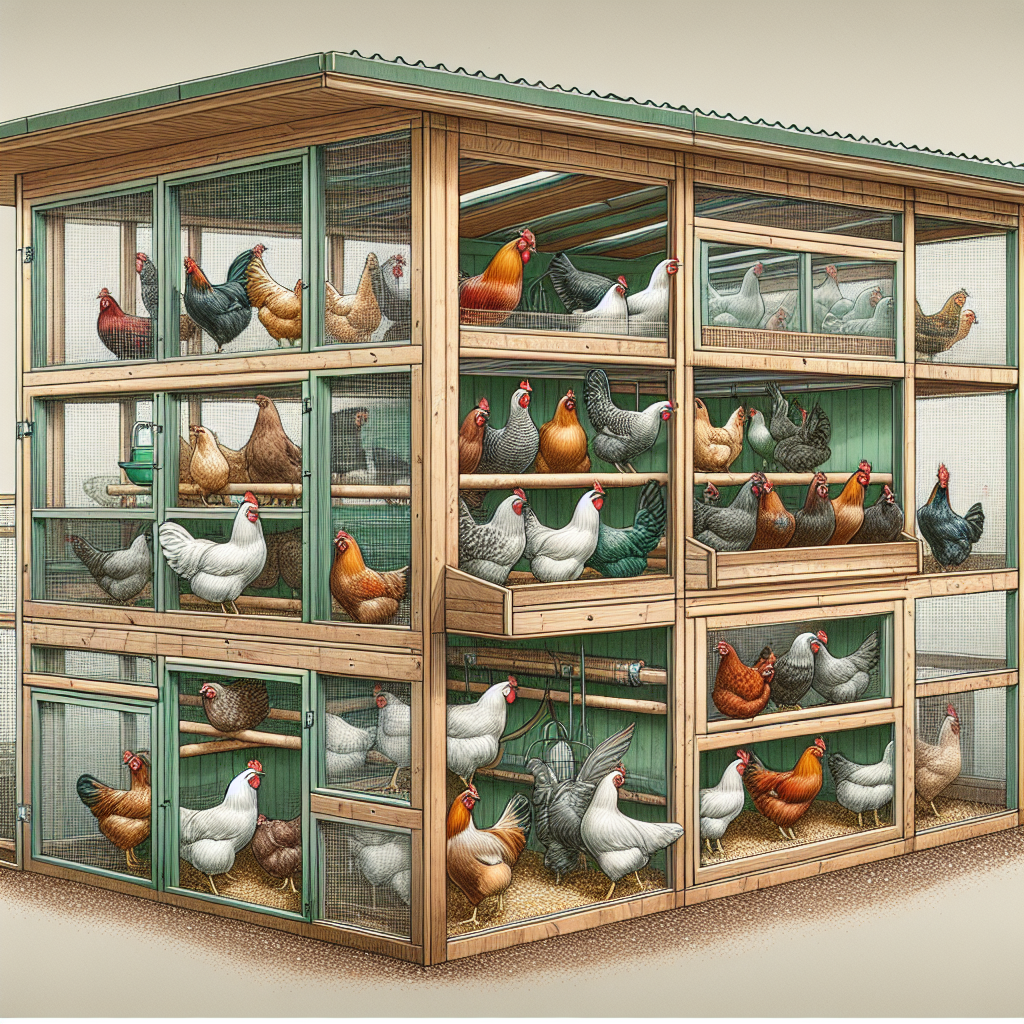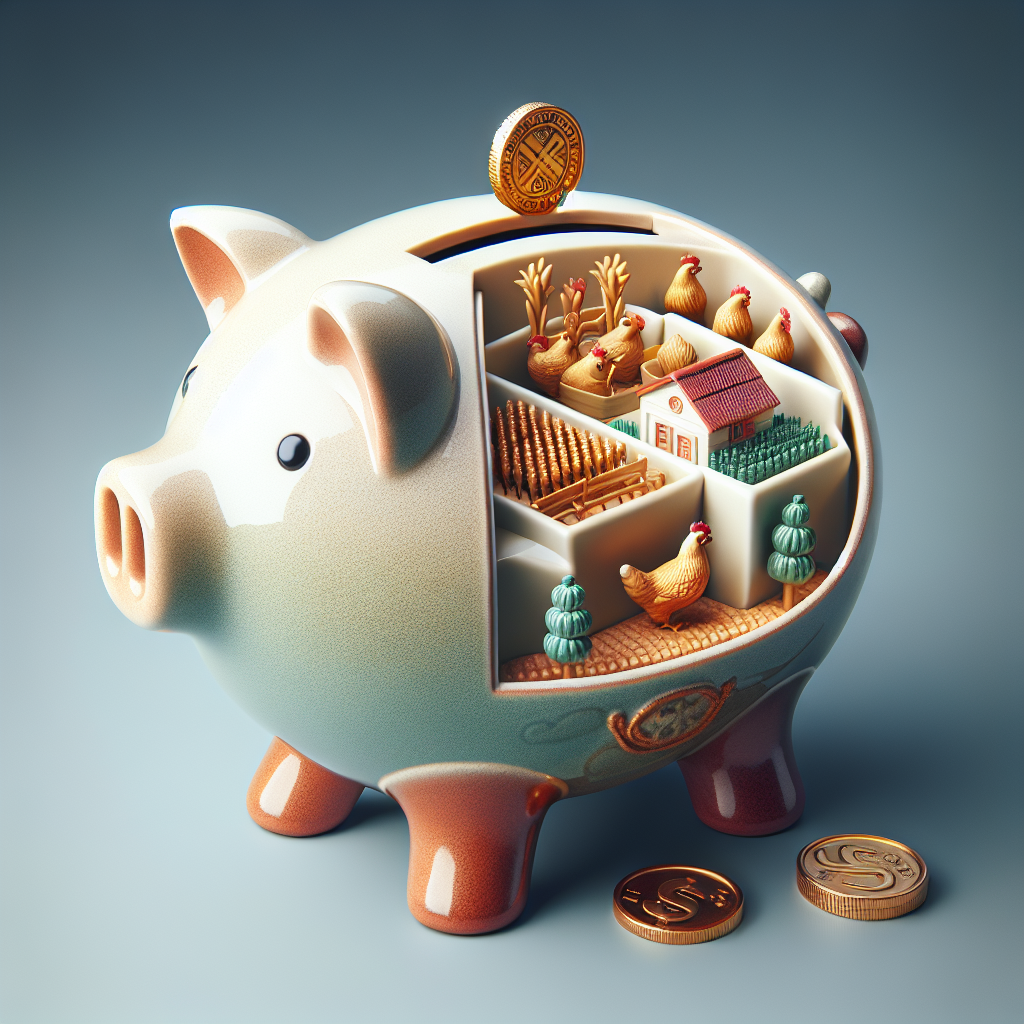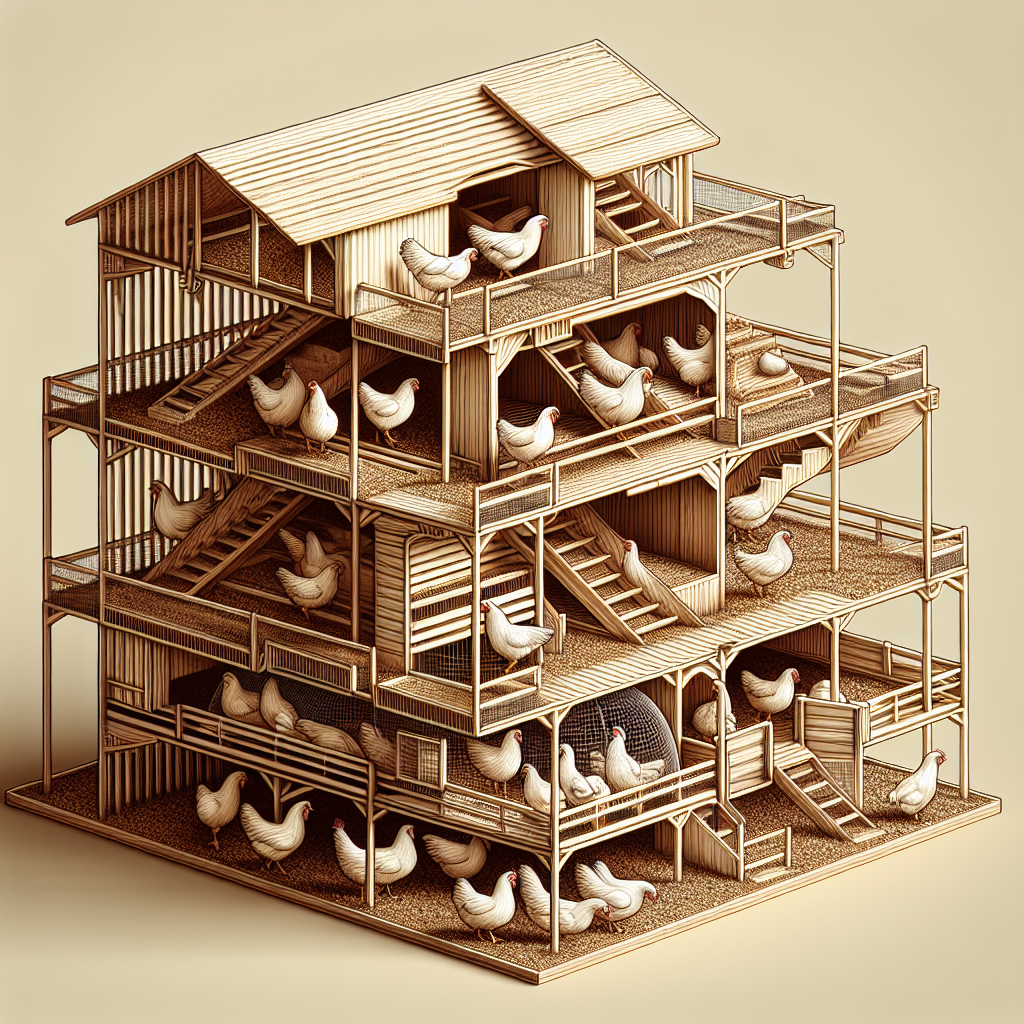In the fascinating world of chicken coops, the choice of materials can greatly impact the benefits they provide. Whether you opt for the rustic charm of wood or the sturdiness of metal, each material brings its own advantages to the table. But how exactly do these coop materials influence the benefits you can reap? Join us as we explore the intriguing dynamics between wood and metal, revealing the ways in which they shape the advantages of chicken coops. From durability to aesthetics, this article will uncover the secrets behind the influence of coop materials on their benefits.
Durability
When considering the durability of coop materials, it is essential to evaluate their resistance to weather conditions and physical impact. Both wood and metal have their advantages in terms of durability, depending on the specific circumstances.
Resistance to weather conditions
Wood, particularly when properly treated and maintained, can withstand various weather conditions. It is known for its natural resistance to decay and provides a reliable barrier against harsh elements such as rain, wind, and UV rays. Metal, on the other hand, is also quite resistant to weather conditions, especially when coated with protective finishes. It can withstand heavy rain, extreme temperatures, and even exposure to saltwater without significant damage.
Resistance to physical impact
When it comes to physical impact, both wood and metal have their strengths. Wood, being a sturdy and solid material, can resist minor impacts without sustaining severe damage. It can absorb some degree of shock and is more forgiving when accidentally hit or bumped into. On the other hand, metal materials, such as aluminum or steel, are renowned for their exceptional strength and durability. They can withstand more substantial impacts, making them an excellent choice for those concerned about potential damage caused by animals or heavy machinery.
Cost
Considering the cost of coop materials is crucial in determining the suitability for your project. A comprehensive evaluation of both the initial cost and long-term maintenance expenses will help you make an informed decision.
Initial cost
When it comes to the initial cost, wood tends to be more affordable compared to metal. Wood is readily available and relatively inexpensive, making it an accessible option for those on a tight budget. Metal, on the other hand, often comes with a higher upfront cost, primarily due to the cost of fabrication and the specific metal type chosen.
Maintenance cost
In terms of maintenance cost, both wood and metal have their own considerations. Wood requires regular maintenance, such as painting, staining, or applying sealants, to ensure its longevity and protect it from rot or insect damage. This can add to the overall maintenance expenses over time. Metal, on the other hand, typically requires less maintenance. While periodic cleaning and inspection may be necessary, metal materials are generally known for their long-term durability and resistance to decay, which can result in lower maintenance costs in the long run.
Sustainability
In an increasingly environmentally conscious world, considering the sustainability of coop materials is paramount. Evaluating their renewability and environmental impact can help reduce your ecological footprint.
Renewability
Wood is a renewable resource, as it can be sustainably harvested from forests and replanted for future generations. This allows for a more sustainable use of resources and minimizes the ecological impact of using wood as a building material. Metal, on the other hand, is not inherently renewable, as it requires mining and extraction processes. However, metal materials can be recycled, reducing the demand for raw materials and minimizing the environmental impact associated with mining.
Environmental impact
Wood and metal materials have different environmental impacts throughout their entire lifecycle. Wood, being a natural material, has a lower carbon footprint compared to metal. During growth, trees absorb carbon dioxide and release oxygen, making wood a carbon-neutral material. Furthermore, responsibly managed forests contribute to biodiversity conservation and ecosystem preservation. Metal, on the other hand, has a higher carbon footprint due to energy-intensive extraction and manufacturing processes. However, the recyclability of metal materials helps mitigate some of its environmental impact by reducing the need for new metal production.
Installation
Considering the ease and time required for installation is crucial, especially for individuals without extensive experience in construction or limited time availability.
Ease of installation
Wood is generally considered easier to work with and install for DIY enthusiasts or those with basic construction skills. Wood can be cut, shaped, and drilled more easily than metal materials, making it more accessible for individuals looking to build their coops themselves. Metal, on the other hand, may require specialized tools and skills for precise measurements and fabrication, making it more suitable for professional installation or those with experience in metalworking.
Time required for installation
In terms of installation time, wood can be quicker to assemble due to its ease of handling and simpler construction techniques. However, the installation time may vary depending on the size and complexity of the coop design. Metal, especially pre-fabricated components, may require more time for precise measurements, welding, and assembly. Therefore, the installation time for metal coops may be longer compared to wood coops.
Insulation
Ensuring proper insulation within the coop is essential for the comfort and well-being of the animals. Both wood and metal can provide adequate insulation, although they have distinct characteristics.
Thermal insulation
Wood is a natural insulator, providing excellent thermal insulation properties. It helps to keep the coop warm in colder weather and cool in hotter climates. The density and cellular structure of wood contribute to its insulating qualities, making it an ideal choice for maintaining a comfortable and stable temperature within the coop. Metal, on the other hand, conducts heat more readily than wood. However, with proper insulation materials, such as foam or insulating panels, the thermal performance of metal coops can be significantly improved.
Sound insulation
Wood also has superior sound insulation properties compared to metal. Its dense structure and fibrous composition minimize sound transmission, creating a quieter environment within the coop. This can reduce stress levels for the animals and provide a more peaceful and calm atmosphere. Metal, while not inherently soundproof, can be enhanced with sound-absorbing materials to reduce noise levels within the coop.
Aesthetics
The aesthetic appeal of coop materials can greatly influence the overall look and feel of the structure. Both wood and metal offer unique visual characteristics, allowing for customization to suit different preferences and styles.
Natural and rustic look of wood
Wood is renowned for its natural and timeless beauty. It adds a rustic charm and warmth to the coop, blending harmoniously with natural surroundings. The grain patterns, textures, and colors of various wood species create a distinct and inviting aesthetic. Whether left untreated for a weathered look or finished with paints or stains, wood provides a versatile canvas for personalization.
Modern and sleek look of metal
Metal materials, such as steel or aluminum, can bring a contemporary and sleek aesthetic to the coop design. With smooth surfaces, sharp lines, and a range of color options, metal offers a modern and industrial look. It can be particularly appealing for individuals seeking a more minimalist or urban style for their coops.
Customization
The ability to customize coop materials according to specific needs and preferences is another significant consideration. Both wood and metal offer different levels of flexibility and precision when it comes to customization.
Flexibility with wood variations
Wood materials provide a high level of flexibility in terms of customization. They can be easily cut, shaped, and joined to accommodate different coop designs and configurations. Whether you need curved structures, angled roof lines, or specific dimensions, wood can be adapted accordingly. Additionally, the availability of various wood species and finishes allows for a wide range of aesthetic choices.
Precision with metal fabrication
Metal materials provide excellent precision and accuracy during fabrication, allowing for intricate details and complex designs. The use of computer-aided design (CAD) and precision machinery ensures precise measurements and consistent quality. Thus, metal coops can be precisely engineered and fabricated to meet specific requirements. This precision may appeal to individuals seeking a polished and professional-looking coop.
Maintenance
Maintaining the coop materials is vital to prolong their lifespan and ensure the safety and well-being of the animals. Understanding the maintenance requirements for wood and metal will help you plan accordingly.
Wood preservation and treatment
Wood requires regular maintenance to preserve its durability and prevent decay. This includes periodic applications of protective coatings, such as paint, stain, or sealants, to shield the wood from moisture, UV rays, and pests. Additionally, regular inspections for signs of rot or insect damage are necessary to address any issues promptly. Proper maintenance practices for wood can extend its lifespan and maintain its aesthetics.
Metal corrosion prevention
Metal materials are typically more resistant to decay and rot than wood. However, metal can still be susceptible to corrosion, especially in humid or coastal environments where exposure to moisture and salt can accelerate the process. Applying suitable protective coatings, such as primers and paints, can provide an additional layer of defense against corrosion. Regular inspections for any signs of corrosion or damage are essential for early intervention and maintenance.
Eco-friendliness
Considering the eco-friendliness of coop materials is becoming increasingly important in reducing our impact on the environment. Both wood and metal have different considerations in terms of their carbon footprint and recyclability.
Carbon footprint
Wood has a lower carbon footprint compared to metal materials. As a natural and renewable resource, wood contributes to carbon sequestration during its growth cycle. By using sustainably sourced wood, you can further reduce your carbon footprint and support responsible forestry practices. Metal materials, on the other hand, have a higher carbon footprint due to the energy-intensive extraction and manufacturing processes involved. However, the recyclability of metal allows for significant reductions in carbon emissions when compared to using virgin metal.
Recyclability
Both wood and metal materials have recyclable properties, reducing the demand for raw resources and minimizing waste. Wood can be recycled or repurposed into other products, such as furniture or paper, at the end of its lifespan. Additionally, using reclaimed or salvaged wood promotes sustainability by giving new life to previously used materials. Metal, being highly recyclable, can be melted down and reused without significant loss in material quality. This recycling process helps conserve resources and reduces the environmental impact associated with metal extraction and production.
Structural Integrity
When it comes to coop materials, ensuring structural integrity is paramount for the safety and longevity of the structure. Evaluating the strength-to-weight ratio and load-bearing capacity of wood and metal will help determine their suitability for different coop designs.
Strength-to-weight ratio
Wood materials generally have a favorable strength-to-weight ratio, making them lightweight yet relatively strong. This allows for easier handling during construction while providing adequate structural support for the coop. Metal materials, such as steel or aluminum, have an even higher strength-to-weight ratio, offering exceptional strength and durability with less material required. This can be advantageous for larger or more complex coop designs where structural integrity is crucial.
Load-bearing capacity
Both wood and metal can provide sufficient load-bearing capacity for most coop designs. Wood, when properly designed and constructed, can handle the weight loads associated with various coop components, such as roofing and flooring. Metal materials, especially steel, have exceptional load-bearing capacity and can withstand heavy loads or snow loads without compromising structural integrity. Assessing the intended use and potential stress factors on the coop will help determine the appropriate materials for sufficient load-bearing capacity.




